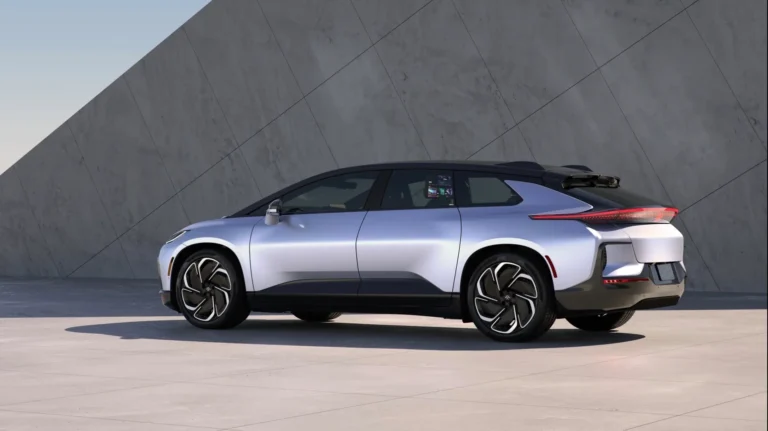
Motor-Powered Two-Wheeler Telematics Market to Reach 90.5 Million Connected Units by 2029
The rapid evolution of the global two-wheeler industry is ushering in a new era of connectivity, with telematics playing a central role. According to the newly released second edition of the Motor-Powered Two-Wheeler Telematics Market report from ResearchAndMarkets.com, the number of connected motorcycles, scooters, and mopeds is projected to surge to 90.5 million units by 2029. This growth reflects a broader industry shift toward smart mobility solutions and the increasing demand for safety, convenience, and real-time data-driven insights.
Growing Role of Telematics in the Two-Wheeler Ecosystem
While embedded telematics systems are still relatively new to the motor-powered two-wheeler space, several major original equipment manufacturers (OEMs) have begun integrating these systems into their vehicles. At the end of 2024, approximately 16.7 million active OEM telematics systems were in use across the globe. This figure is expected to climb at a compound annual growth rate (CAGR) of 29%, reaching 59.7 million units by 2029.
Annual OEM telematics shipments are also forecasted to grow sharply, increasing from 8.3 million units in 2024 to 24.9 million units in 2029—a CAGR of 24.4%. Key telematics applications include emergency call services (eCall), roadside assistance, stolen vehicle tracking, vehicle diagnostics, over-the-air updates, and more. The rising interest in electric two-wheelers (e-2Ws) is also accelerating telematics adoption, as real-time battery management and charging data become increasingly valuable to both users and manufacturers.
OEM Telematics: Key Players and Initiatives
A growing number of two-wheeler OEMs across regions are already deploying embedded telematics services. Notable examples include:
- Europe: BMW Motorrad
- United States: LiveWire, Zero Motorcycles
- India: Hero MotoCorp, TVS Motor, Chetak (Bajaj Auto), Royal Enfield
- China: Yadea, NIU Technologies, Segway-Ninebot, Sunra
These manufacturers are gradually integrating telematics either through dedicated infotainment clusters or mobile-connected apps. Some also offer features like turn-by-turn navigation, ride analytics, and remote vehicle diagnostics.
Aftermarket Telematics Continues to Expand
Despite growing OEM integration, the aftermarket segment remains a vital component of the two-wheeler telematics ecosystem. By the end of 2024, aftermarket telematics systems in active use were estimated at 17.2 million units. This number is expected to reach 30.8 million units by 2029, growing at a CAGR of 12.3%.
Annual shipments of aftermarket systems are projected to increase from 5.8 million units in 2024 to 10.2 million units in 2029, supported by strong demand in developing markets and among legacy vehicle owners. The Asia-Pacific region leads in terms of active telematics system installations, followed by the Rest of the World (RoW) category, including Africa, the Middle East, and Latin America.
Suppliers and Technology Providers: A Competitive Landscape
The market features a diverse array of suppliers serving both OEM and aftermarket segments. These include Tier 1 automotive technology providers leveraging their experience in connected cars to expand into the two-wheeler space, as well as specialized telematics service providers (TSPs).
Key OEM Telematics Vendors:
- Actia
- Bosch
- Cerence AI
- Continental
- Harman International
- Panasonic
- Sibros
India-Focused TSPs:
- Ajjas
- iTriangle Infotech
- Trak N Tell
These vendors support OEMs by supplying the hardware, firmware, and cloud platforms required for real-time data communication and telematics service delivery.
Prominent Aftermarket Telematics Providers:
- Europe: Mapit IoT, Trackting, GeoRide, Monimoto, Sizzapp, Scorpion Automotive
- North America: SVR Tracking, Find It Now
- South America: Carsystem, Strix
- India: Fleettrack, Onelap Telematics
- China: WanWayTech
- South Africa: Tracker Connect
Additionally, companies like ERM Advanced Telematics, Jimi IoT, Queclink Wireless Solutions, Teltonika, and Tramigo provide telematics hardware and white-labeled solutions for B2B integration.
Industry Trends Shaping the Market
The report highlights several trends shaping the motor-powered two-wheeler telematics space:
- Electric Two-Wheelers as Growth Catalysts
The rise of electric scooters and motorcycles is creating new use cases for telematics, such as battery health monitoring, range estimation, and energy-efficient routing. - Connected Clusters and Infotainment Integration
OEMs are exploring hybrid approaches that blend smartphone integration with digital instrument clusters offering navigation, diagnostics, and media. - Vehicle-to-Everything (V2X) Potential
V2X communication for two-wheelers is emerging as a promising frontier, particularly in urban safety and collision avoidance systems. - Connected Services and Business Models
Telematics is enabling OEMs to experiment with leasing, financing, subscription-based services, and pay-as-you-ride insurance models. - Geographic Expansion
The Asia-Pacific region continues to be the epicenter of growth, but Latin America and Africa are becoming promising markets for both OEM and aftermarket telematics solutions.
Forecasts and Regional Outlook
The report provides granular forecasts through 2029, segmented by OEM and aftermarket systems and broken down across regions:
- OEM Telematics Shipments
- 2024: 8.3 million units
- 2029: 24.9 million units
- CAGR: 24.4%
- OEM Active Installations
- 2024: 16.7 million units
- 2029: 59.7 million units
- CAGR: 29%
- Aftermarket Telematics Shipments
- 2024: 5.8 million units
- 2029: 10.2 million units
- CAGR: 12.1%
- Aftermarket Active Installations
- 2024: 17.2 million units
- 2029: 30.8 million units
- CAGR: 12.3%
Comprehensive Market Coverage
The report includes:
- Case studies of 24 two-wheeler OEM telematics programs
- Detailed profiles of 31 telematics technology and service providers
- Value chain analysis and business model assessment
- Insights from industry interviews and proprietary data models
- Market forecasts by region and product segment through 2029
The global motor-powered two-wheeler telematics market is poised for transformative growth over the next five years, driven by increasing digitization, electrification, and consumer demand for connected mobility solutions. With a projected 90.5 million connected two-wheelers by 2029, the market offers significant opportunities for OEMs, technology vendors, and aftermarket players alike to redefine the riding experience and unlock new revenue streams in the connected era.







